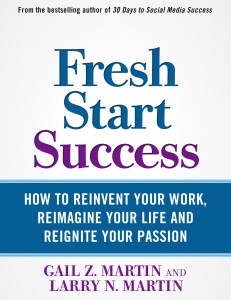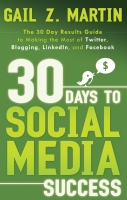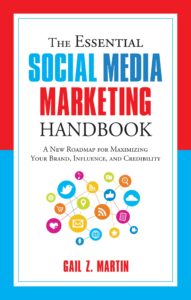Are you ready for a fresh start? Well, the truth is – so am I. This year, 2016, marks DreamSpinner Communications 13th year in business. Over the course of more than a decade, I’ve reinvented the company’s focus several times, and we’re about to do it again.
Fresh Start Success: How to Reinvent Your Work, Reimagine Your Life and Reignite your Passion is our new book for 2016. Forty-two stories about incredible people – just like you – from all different industries who recreated themselves and their careers from a brand new, successful, Fresh Start.
 Here are the amazing entrepreneurs profiled in Fresh Start Success: Lauren Randolph, Oksana Gritsenko, Debbi Dachinger, Lisa Manyon, Lisa Jendza, Tamara Green, Sheri Fink, Stephen Hobbs, Barbara Edie, Wendy Woodworth, Dr. Cha-Zay, Danielle Ratliff, Christine Bove, Grace Kelly, Sheevaun Moran, Dawn Fleming, Gail Watson, Teresa DeGrosbois, Sharon McRill, Lisa Woodie, Christine Hassler, Marla Goldberg, Amber Alle, Poonam Gupta, Karen Kessler, Sherri Richards, Lisa Minnini, Patryk Weznowski, Debbie Peterson, Melissa Darnay, Dr. Susan Sklar, Katana Abbott, Pierette Simpson, Wendy Ida, Mike Jaffe, Jo Dibblee, LeeAnn Shattuck, my amazing co-blogger Faith Monson, as well as my story and that of my husband and business partner, Larry Martin.
Here are the amazing entrepreneurs profiled in Fresh Start Success: Lauren Randolph, Oksana Gritsenko, Debbi Dachinger, Lisa Manyon, Lisa Jendza, Tamara Green, Sheri Fink, Stephen Hobbs, Barbara Edie, Wendy Woodworth, Dr. Cha-Zay, Danielle Ratliff, Christine Bove, Grace Kelly, Sheevaun Moran, Dawn Fleming, Gail Watson, Teresa DeGrosbois, Sharon McRill, Lisa Woodie, Christine Hassler, Marla Goldberg, Amber Alle, Poonam Gupta, Karen Kessler, Sherri Richards, Lisa Minnini, Patryk Weznowski, Debbie Peterson, Melissa Darnay, Dr. Susan Sklar, Katana Abbott, Pierette Simpson, Wendy Ida, Mike Jaffe, Jo Dibblee, LeeAnn Shattuck, my amazing co-blogger Faith Monson, as well as my story and that of my husband and business partner, Larry Martin.
Maybe you recognize some of those names, and maybe you don’t—yet! Over the course of this year, you’ll get to know these fantastic, visionary people through this newsletter, this blog, and of course, through the Fresh Start Success book, which will be published later this year.
When I interviewed the Fresh Start Success folks, I asked everyone the same nineteen questions. What amazed me was how different each person’s path was, yet how many things they had in common although they are from different countries, belong to various age groups, and work in a wide range of professions.
 They told me what they trained to do, what career path they set out to follow, and what they loved—as well as what made them crazy. They remembered what the last straw was that made them decide to make a big change, how they got the courage to take a risk, and what they did to prepare for their Fresh Start Success. They were candid about what went well, where they ran into setbacks—and how they overcame both obstacles and nay-sayers.
They told me what they trained to do, what career path they set out to follow, and what they loved—as well as what made them crazy. They remembered what the last straw was that made them decide to make a big change, how they got the courage to take a risk, and what they did to prepare for their Fresh Start Success. They were candid about what went well, where they ran into setbacks—and how they overcame both obstacles and nay-sayers.
You’ll be surprised in the variety of answers to ‘how long did it take to become successful’, and you’ll probably see yourself in some of the ways these folks decided what was most important to them as they reinvented themselves and their careers. You’ll find out what they learned the hard way, what attributes they consider key to a successful reinvention, and how reimagining their work and life made them a different person. You’ll even find out what kind of superpower they’d like to have!
Here are a couple of things that really made an impression on me.
• Although all of my interviewees consider their reinvention successful and most are making as much or more as they did before their shift, the decision to change wasn’t about the money.
• Despite the setbacks and the hard work necessary to start over (sometimes in a completely different area of expertise or even a different country), there were no regrets. Every single person talked about how essential personal branding and marketing was to achieve their Fresh Start Success. I’ll have more to share with you as we get closer to the launch date.
In the meantime, why not get thinking about how you can make 2016 your year for a Fresh Start Success? Ask yourself these questions to get started:
1. What do I love about what I’m doing now? What makes me crazy?
2. What do I feel I was born to do? How close am I do making that happen?
3. If I could do anything else for a living, what would I do? If it’s not what you’re doing now, why not? What would it take to make the jump?
4. What is your personal brand? How you are marketing yourself to make the leap to your next success?
If you feel stuck on any of those questions, Larry and I would be glad to coach you through the process. Watch for some all-new Fresh Start Success programs and packages coming to help YOU reinvent your work, reimagine your life and reignite your passion!








